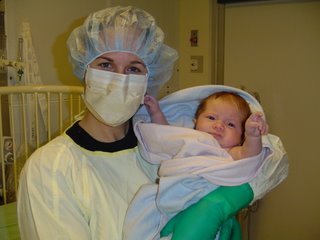 Each day I find myself in the parent lounge at the hospital, talking to one of the mothers who's child is receiving treatment for their cancer. Some mothers that have come to be with their child live relatively close to Toronto like Durham, Mississauga, and Etobicoke, others live further away and travelled from the Ontario-Quebec border, and still, some come from as far away as New Brunswick and Nova Scotia. Their children's ages range from 3 months to 18 years and their child's reason for receiving treatment are all different. That said, these mothers have one thing in common, they have put their life on hold to be with their child. Day in and day out, you will find them at the hospital either talking with doctors, gowning up to enter their child's room, or discussing what their child's white blood cell count is with another mother in hopes that it reaches that magic number so they may bring their baby home.
Each day I find myself in the parent lounge at the hospital, talking to one of the mothers who's child is receiving treatment for their cancer. Some mothers that have come to be with their child live relatively close to Toronto like Durham, Mississauga, and Etobicoke, others live further away and travelled from the Ontario-Quebec border, and still, some come from as far away as New Brunswick and Nova Scotia. Their children's ages range from 3 months to 18 years and their child's reason for receiving treatment are all different. That said, these mothers have one thing in common, they have put their life on hold to be with their child. Day in and day out, you will find them at the hospital either talking with doctors, gowning up to enter their child's room, or discussing what their child's white blood cell count is with another mother in hopes that it reaches that magic number so they may bring their baby home.When I go to sit down at the computer to write my article for the day I am usually unsure what story or information I will pass on to the friends and family that read this web log. Sometimes I look at the pictures that were taken for the day, other times I will write about some treatment that the doctors have been discussing with us, but today's article has been in my mind for quite some time now.
Parker's diagnosis with ADA has been extremely hard on everyone in our family. The th
 ought of not being able to see Parker, the concept of Parker living out his first year in isolation, and the uncertainty of whether his treatment will be successful is difficult for everyone. But today, this article is not about everyone. It is about my wife.
ought of not being able to see Parker, the concept of Parker living out his first year in isolation, and the uncertainty of whether his treatment will be successful is difficult for everyone. But today, this article is not about everyone. It is about my wife.As a man, I cannot imagine what it was like for my wife to carry my child inside her for 9 months, to know how it felt as she gave birth, or to even conceptualise the bond that she had with Parker whenever she breastfed him. But even more difficult to imagine is how she felt after her little boy got sick and how all the breastfeeding and cuddling in the world could not make him better.
Each day, I get up in the morning and go to work, and each day my wife gets up and goes to the hospital where she can be with her son. She arrives at the hospital between eight and nine, puts on her sterile boots, hairnet, mask, gloves and gown and enters the isolation room where she stay
 s with Parker until we leave that night around eight o'clock. Everyday she puts on a big smile underneath the mask that covers most of her face, opens up her eyes as wide as she can, and sings to him so he can hear her voice. She does this religiously in hopes that he will soon smile back at her.
s with Parker until we leave that night around eight o'clock. Everyday she puts on a big smile underneath the mask that covers most of her face, opens up her eyes as wide as she can, and sings to him so he can hear her voice. She does this religiously in hopes that he will soon smile back at her.Everyone I have ever spoken with has always said the same thing. Parker acts completely different when he is with his mother. He settles much more quickly and is definately less fussy when she is around. I have come to realise that there is a very special bond between a mother and her baby and each day I am lucky enough to witness that bond as my wife holds her son close to her body and kisses him through her mask. Now, I understand that Parker has yet to master the concept of language, but I know in my heart that there is a message he would like me to pass on to his mother.
----------------------------
I love you.
--------------

























